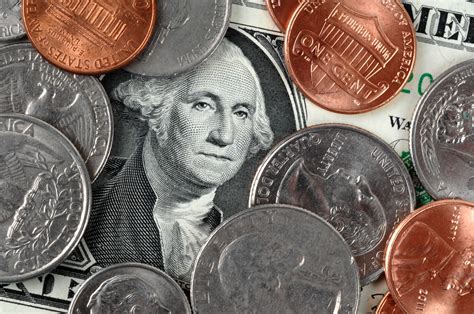Kickstart Your Financial Freedom: Why Budgeting is Your New Power Move
In a world of constant spending temptations, taking control of your finances is not just smart—it’s essential for achieving your goals, whether that’s buying a house, funding a passion project, or simply reducing stress. For men, mastering personal finance means building a robust foundation for a secure future, allowing for both ambition and peace of mind. This article dives into practical, no-nonsense budget hacks designed to help you maximize your savings and systematically reduce debt, paving the way for true financial independence.

Phase 1: Know Your Numbers – The Foundation of Financial Control
You can’t fix what you don’t understand. The first step to effective budgeting is getting a clear picture of where your money goes. This isn’t about deprivation; it’s about awareness and making informed choices.
Track Every Dollar (Initially)
For a few weeks, meticulously track every single expense. Use a spreadsheet, a budgeting app (like Mint, YNAB, or a simple notebook), or even your bank’s transaction history. Categorize everything: housing, food, transportation, entertainment, subscriptions, etc. This raw data will reveal surprising spending patterns and highlight areas ripe for optimization.
Build a Realistic Budget
Once you know where your money is going, create a budget that aligns with your income and goals. A common rule of thumb is the 50/30/20 rule: 50% for needs (housing, utilities, groceries), 30% for wants (dining out, entertainment, hobbies), and 20% for savings and debt repayment. Adjust these percentages to fit your unique situation, always prioritizing savings and debt reduction.
Phase 2: Master the Art of Maximizing Savings
Saving money doesn’t have to feel like a sacrifice. It’s about smart choices that compound over time. Here are some actionable strategies:
Automate Your Savings
This is arguably the most powerful hack. Set up an automatic transfer from your checking account to a dedicated savings account the day you get paid. Even a small amount, like $50 or $100, will build up surprisingly quickly. “Pay yourself first” is not just a cliché; it’s a cornerstone of wealth building.
Audit Your Subscriptions
How many streaming services, gym memberships you don’t use, or software subscriptions are you paying for? Go through your bank statements and cancel anything you don’t actively use or value. These small monthly leaks add up to significant annual savings.
Smart Spending on Essentials
- Groceries: Plan meals, make a list, and stick to it. Avoid impulse buys. Consider store brands.
- Transportation: Carpool, use public transport, bike, or walk when possible. Group errands to save on gas. Perform regular car maintenance to avoid costly repairs.
- DIY vs. Hire: For minor home repairs, car maintenance, or even cooking, learn to do it yourself. YouTube tutorials are your friend and can save you hundreds, if not thousands, annually.

Negotiate Bills
Many service providers (internet, cable, insurance) are willing to negotiate rates, especially for loyal customers. Call them up, ask for a better deal, or threaten to switch providers. A quick phone call could save you a significant amount each month.
Phase 3: Strategically Slash Your Debt
Debt can be a heavy burden, but with a strategic approach, you can systematically eliminate it and free up your cash flow. The key is consistency and focus.
Prioritize High-Interest Debt
Credit card debt typically carries the highest interest rates. Focus on paying these off first. Two popular methods are:
- Debt Snowball: Pay off the smallest debt first, then roll that payment into the next smallest. This provides psychological wins.
- Debt Avalanche: Pay off the debt with the highest interest rate first, regardless of the balance. This saves you the most money in interest over time.
Choose the method that motivates you most and stick to it relentlessly.
Avoid New Debt
While paying off existing debt, commit to not taking on any new debt. If you can’t afford something, save up for it. This simple rule is crucial for breaking the debt cycle.

Phase 4: Build for the Future – Long-Term Habits
Once you’ve started saving and reducing debt, it’s time to build habits that will ensure long-term financial stability and growth.
Build an Emergency Fund
Aim for 3-6 months’ worth of living expenses in a separate, easily accessible savings account. This fund acts as a buffer against unexpected job loss, medical emergencies, or large home repairs, preventing you from falling back into debt.

Start Investing Early
Once your emergency fund is solid and high-interest debt is under control, start investing. Even small, consistent contributions to a retirement account (like a 401(k) or IRA) or a diversified investment portfolio can grow significantly over time thanks to the power of compound interest. Don’t let perfection be the enemy of good – just start.
Regular Financial Reviews
Schedule a monthly or quarterly “money meeting” with yourself. Review your budget, track your progress on savings and debt reduction, and adjust your plan as needed. Life changes, and so should your financial strategy.

Your Journey to Financial Mastery Starts Now
Taking control of your finances is one of the most empowering steps a man can take. It’s not just about numbers; it’s about having options, reducing stress, and building a foundation for the life you want to live. By implementing these practical budget hacks – understanding your money flow, maximizing your savings, strategically tackling debt, and building long-term habits – you’re not just saving money; you’re investing in your future self. Start today, stay consistent, and watch your financial landscape transform.




